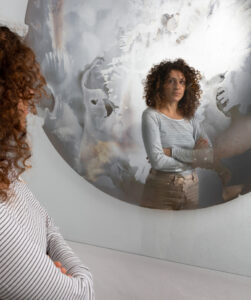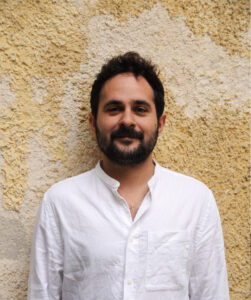A MIRROR IS A MIRACLE. A conversation with Shay Alfia, an artist
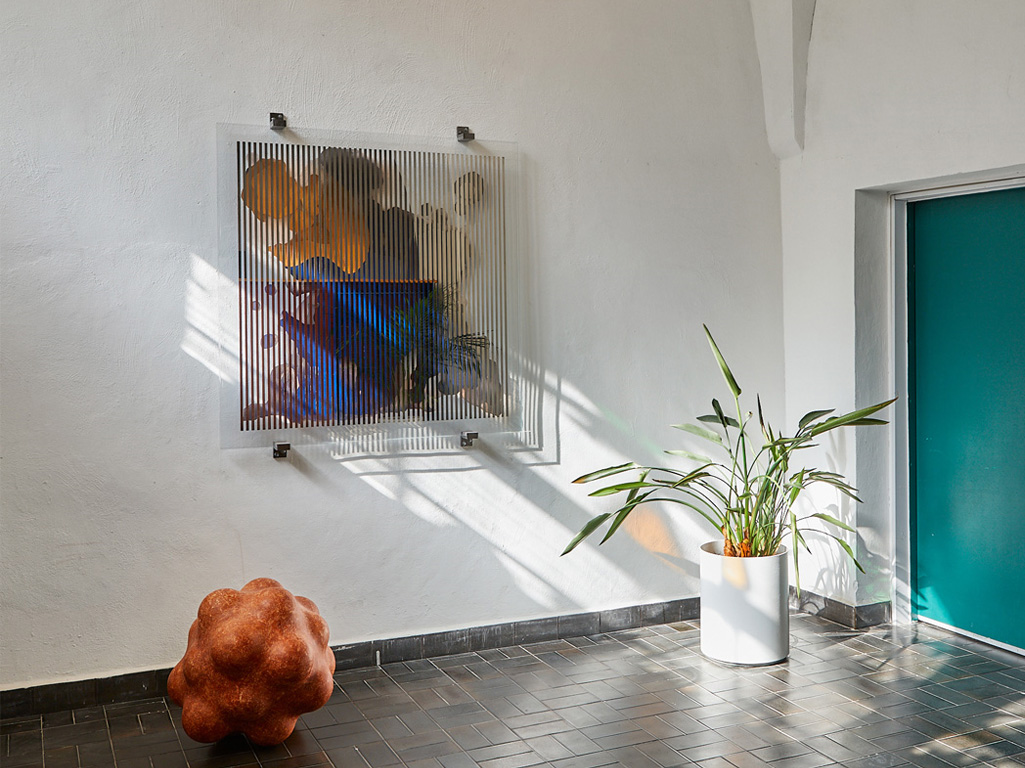
Ahead of the TAAD international collectible design fair in Tel Aviv, we met with an artist and object designer Shay Alfia, whose works are presented at the fair. At SALT gallery, which she co-founded with her partner and product designer Tomer Netanel Levy, we discussed her art, sources of inspiration and collectible design in Israel and worldwide.
Tomer Netanel Levy & Shay Alfia, SALT Gallery
Tel Aviv-Yafo, Israel
Art and Design Collectibles
Could you tell us a bit about your background and how you began your artistic journey?
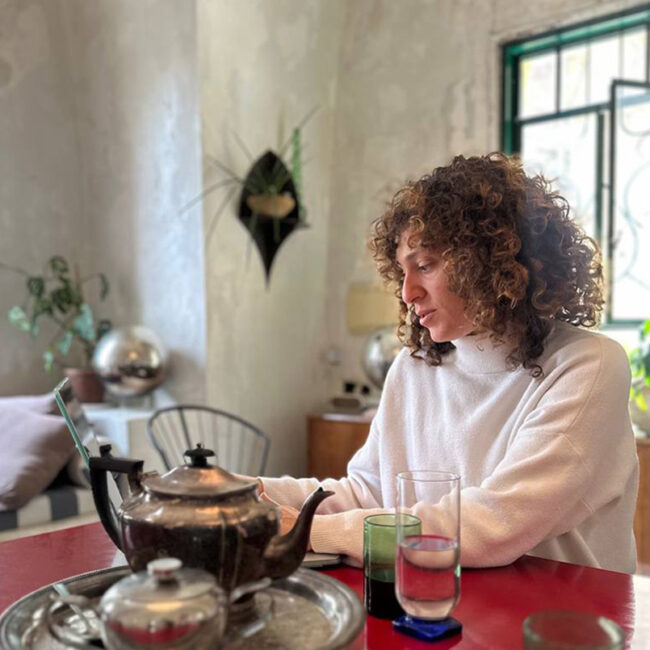
Since I was young, I dreamed of becoming an artist, being always fascinated by how things in the world are created. Eventually, I have chosen to study industrial design at the Holon Institute of Technology (HIT).
My graduation project focused on the theme of reflection, which had always intrigued me. Initially, I attempted to design mirrors that could be turned on and off, but that concept didn’t materialize. Eventually, I discovered a 19th-century technique for creating silver mirrors, which I still use today. This process involves applying thin layers of silver to glass —similar to the silver particles used in early photography.
For my final project, I applied this technique to create a series of three blown glass vases, “The Narcissus Vases”. The idea emerged after I was advised to explore a more voluminous format for my diploma work, rather than working with flat mirrors. I was so excited by the results of my experiments that I felt compelled to continue creating—not just as a designer, but as an artist—allowing myself to express aspects of my creativity that had remained unexplored during my industrial design studies.
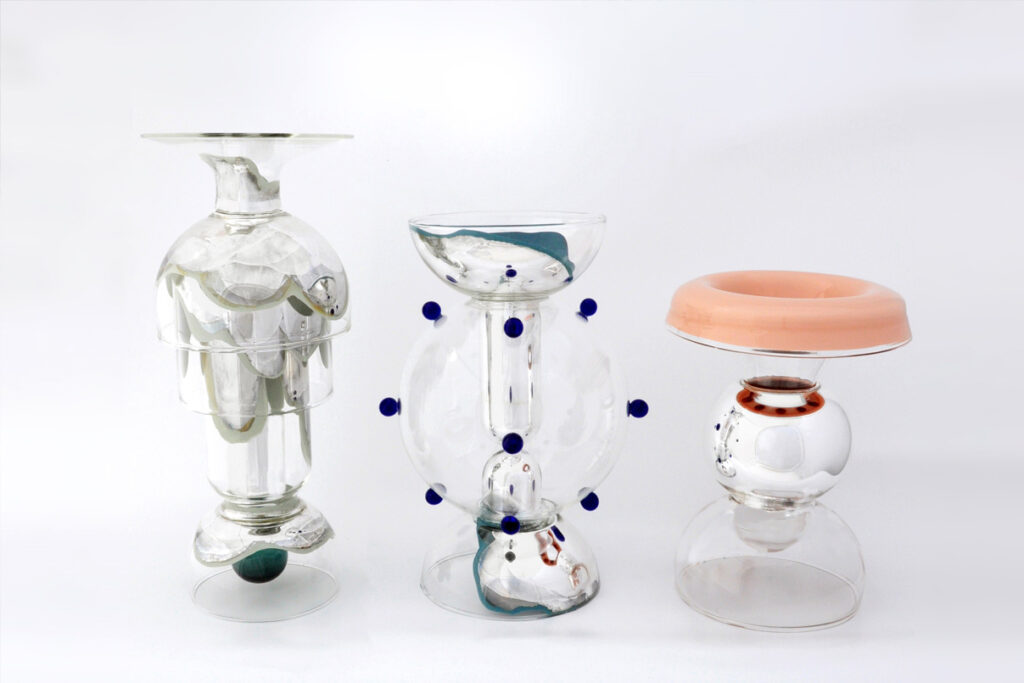
A year later, I presented my first solo exhibition at Beit Kandinof, followed by participation in the Fresh Paint art fair’s artist greenhouse in 2020 (held online due to the pandemic). That experience was a success—I sold most of the works I exhibited—which reassured me that I was on the right path. Since then, I’ve continued creating, both independently in the studio and through commissioned site-specific projects.
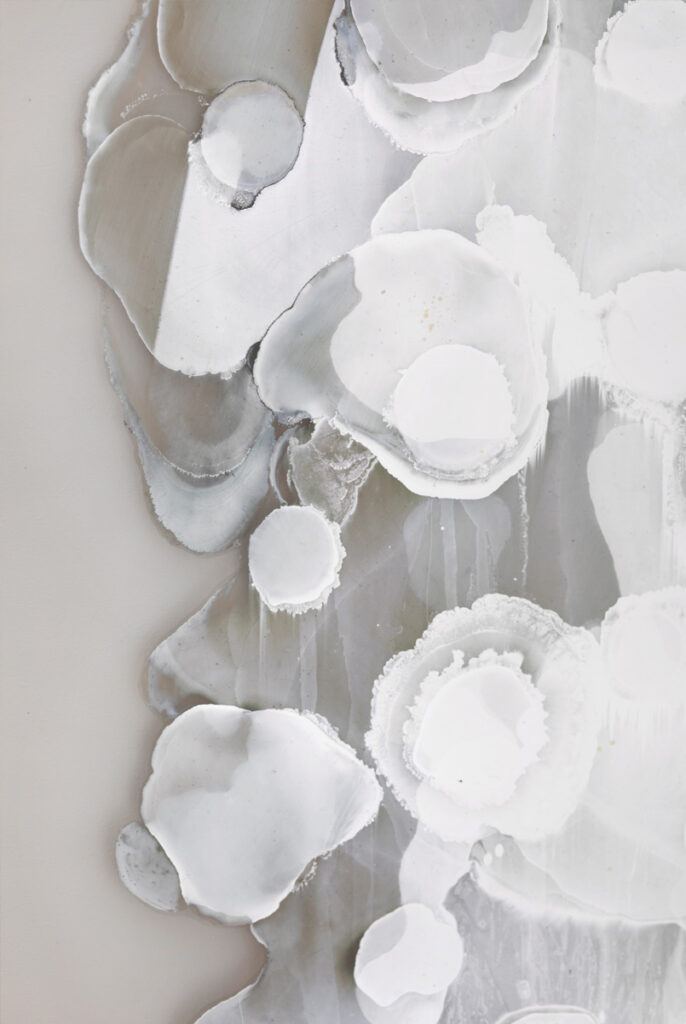
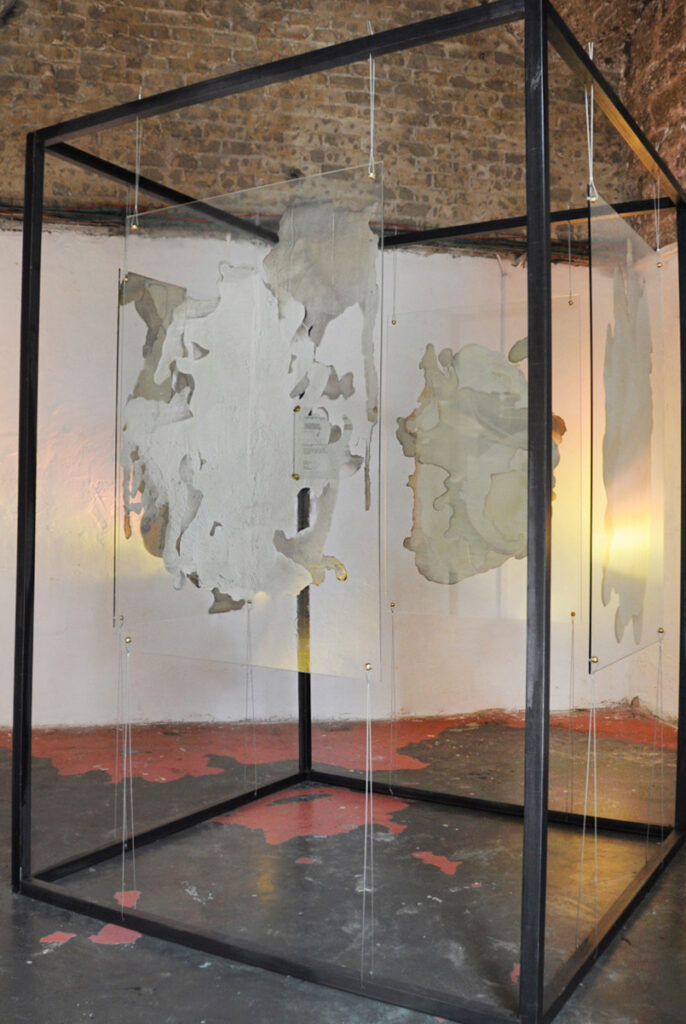
How would you describe your work in a few sentences?
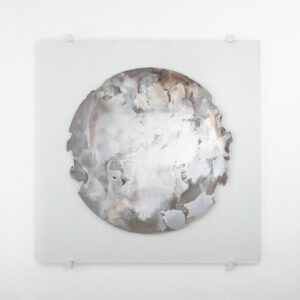
I’m an interdisciplinary artist exploring the phenomenon of reflection. Using ancient mirror-making techniques, I apply thin layers of precious metals onto glass to create partially reflective surfaces. The stains I create disrupt the reflection, distorting the typical mirror image. My process varies from project to project—sometimes a single experiment becomes the final work, while other times I refine a piece for months until it feels right. Thus, each creation is truly one of a kind.
I also stage and photograph reflections of classical images, such as portraits or still lives. Through my work, I investigate the relationship between image, documentation, and perception in our time.
Why did you choose working with mirrors?
Optical phenomena have always amazed me— the illusion a mirror creates, its meanings, uses, and how reflection evolves alongside technology. I realized that when people stand in front of a mirror—an object, a typical product of industrialization that they accept as something natural—they rarely stop to think about how it reflects them. They don’t consider the miracle that it is. This realization made me want to intervene and convey my own sense of wonder.
Silver has no color—it simply reflects the light that hits it from its surroundings. The idea that I can see something that isn’t physically there, but rather light bouncing back from another place, felt like magic to me. Humanity has always been preoccupied with reflection—it’s a phenomenon that never ceases to captivate us—and I felt I had to understand how it works.
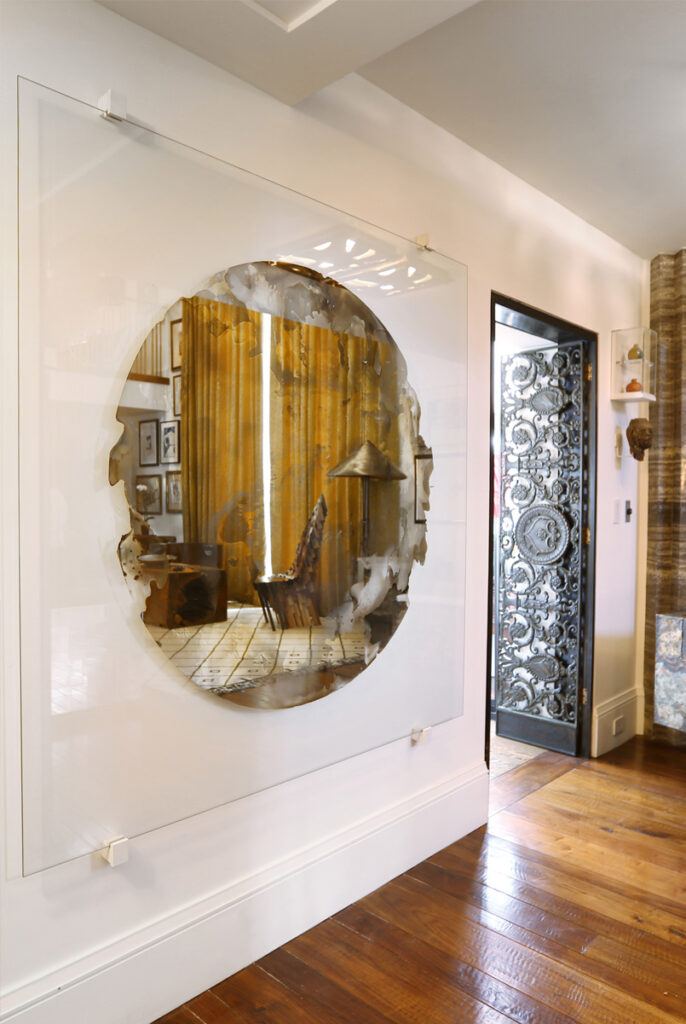
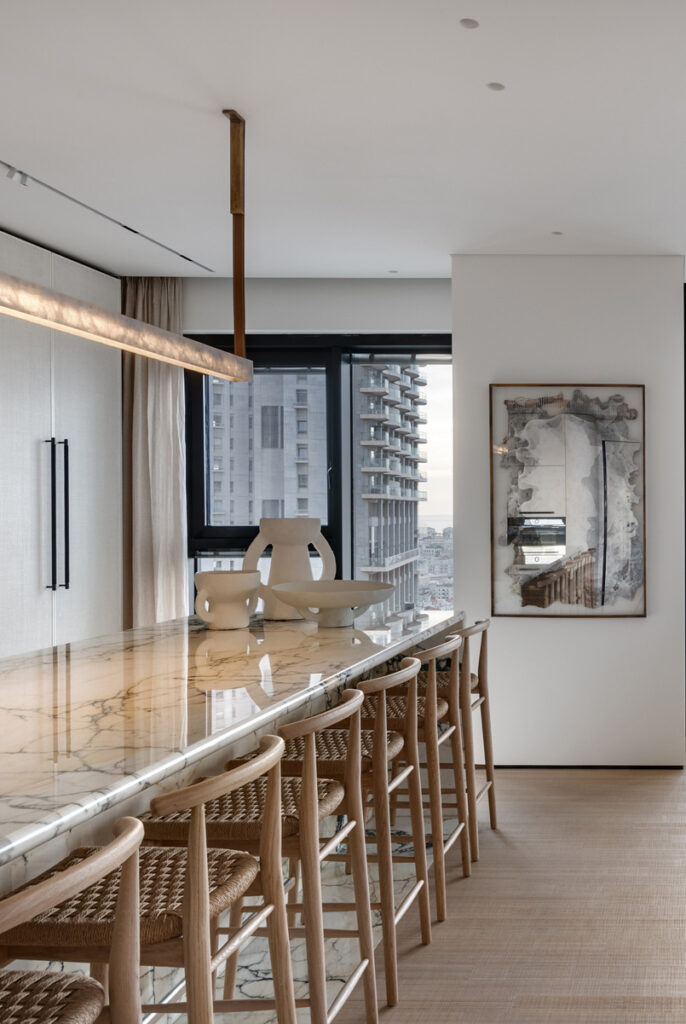
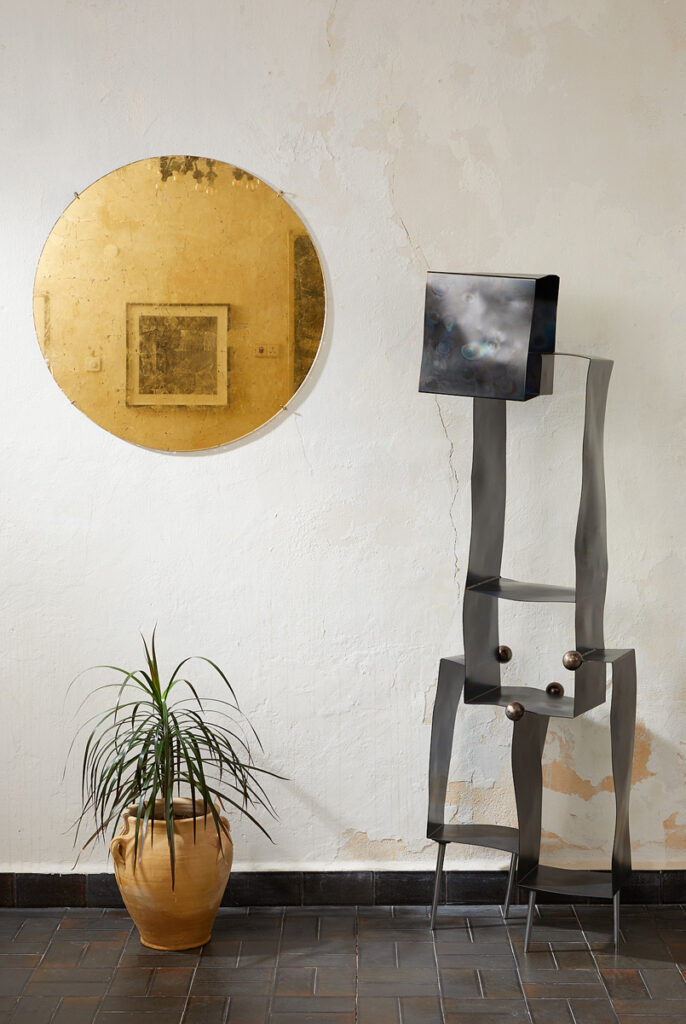
Where do you get your inspiration from?
My inspiration ranges from ancient techniques, archaeology, art history, chemistry, Greek mythology, philosophy, nature, photography, quantum theory, documentation, light, optical art, duplication, and perception of reality.
I love exploring both the technical side—how things work, what they’re used for, and their functions—as well as the emotional meanings they convey. The journey of light and its impact on human perception can spark ideas that are either philosophical or practical. Above all, what guides me is the sense of wonder. When I create something new, I aim to provoke curiosity, to make people ask, How was this made? What am I seeing?
Do you work with private clients and interior designers?
Yes, I create commissioned works, which follow a more structured process than my usual creative practice. Typically, I meet with clients, show them works in the gallery, and discuss their vision. After a site visit, I return to the studio to create sketches. Once a design is approved, I plan the installation, order the glass, and begin working on the pieces. I often collaborate with external professionals, and at the end of the process, we assemble the work together. One example is “Mother of Reflection”, a piece inspired by nacre (mother-of-pearl). While working on an office project, I researched how the material’s microstructure refracts light to create its iridescent effect. I studied the forms of shells that produce nacre and translated them into abstract stains.
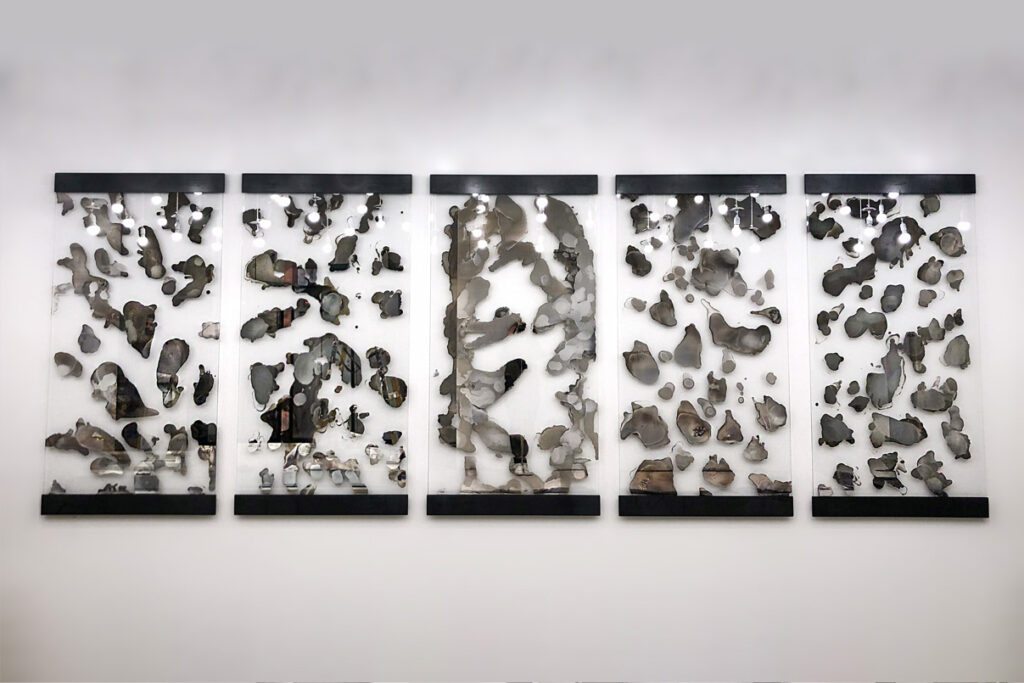
What challenges do you face in your work, and how do you overcome them?
– One challenge is to find the materials that I need. For example, I work with reverse gilding, an ancient technique where gold leaf is applied to glass and painted over with a special enamel paint called One Shot. The gold is later removed, leaving the painted design behind. While this paint adheres well to glass, it’s not available in Israel and is classified as hazardous for shipping. For years, I tried various ways to obtain it without success. Eventually, this led me to a long series of experiments with different paints and materials until I found an alternative that preserves the mirror effect. Some of the materials I need are not available locally. Often, the greatest challenges lead to discoveries that take my work in directions I never imagined.
– Another challenge I would highlight is the mental aspect. There are times when I work on new pieces without knowing when someone will purchase them—especially in an expensive city like Tel Aviv. A big part of my practice is cultivating a positive mindset. Working with mirrors and reflection has helped me become more confident and optimistic. Every morning, I consciously choose the vibes I want to bring into the day, giving thanks for my life, my freedom, and the ability to follow what excites me.
We are now in SALT gallery of collectible design. Tell us more about this place.
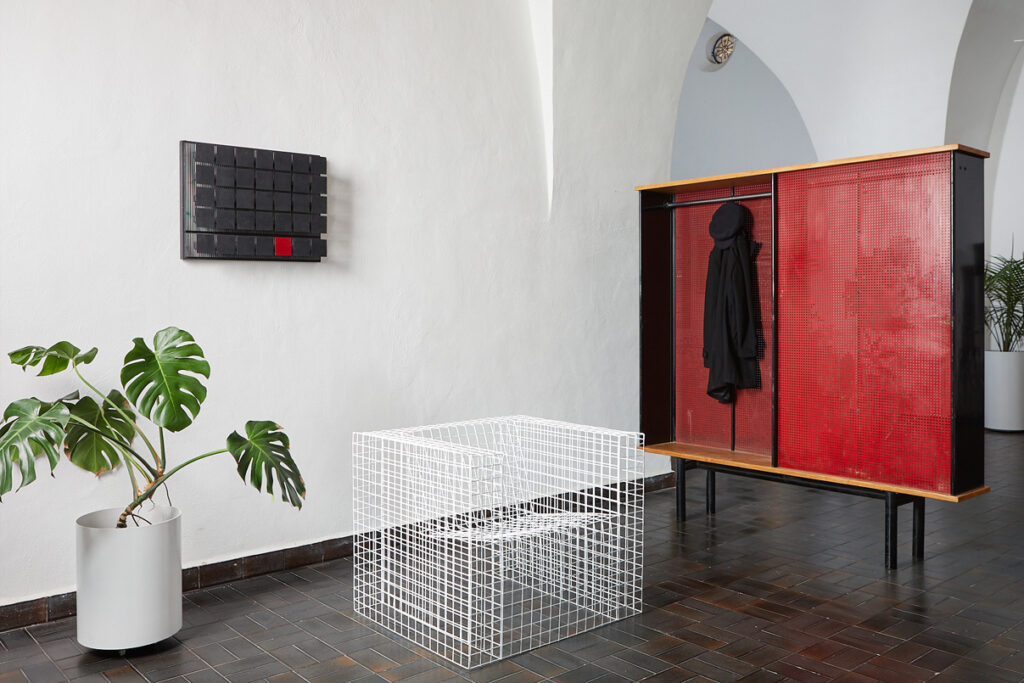
During my studies at the Holon Institute of Technology, I met my partner Tomer Netanel Levy, a furniture designer. Together, in 2022, we founded SALT – a design-art gallery specializing in collectible design located in Old Jaffa.
We opened our hybrid platform since we wanted to create a proper stage of exhibiting our collectible design and raise the awareness of the field in Israel.
Here, the attitude is often more conservative regarding the definitions between media while worldwide the boundaries are really blended. We wanted to change that local perception.
SALT is also about introducing our clients to new ways of collecting. All of our contemporary pieces are either unique or limited editions. They are signed, numbered and provided with certificates of authenticity. When visitors come here they have the opportunity to see how artworks integrate in domestic space.
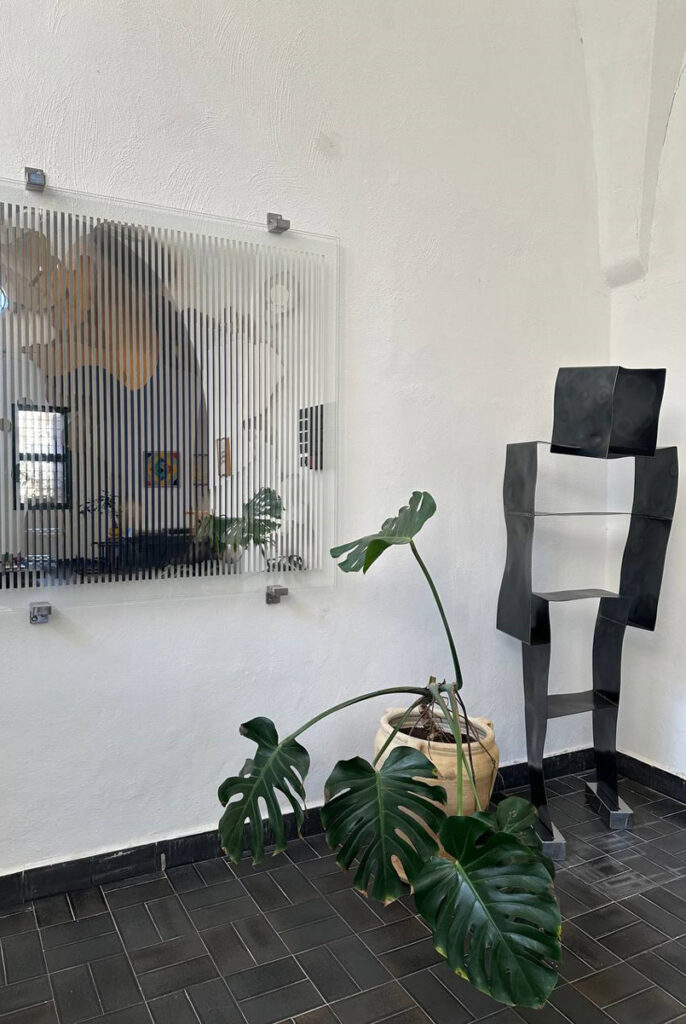
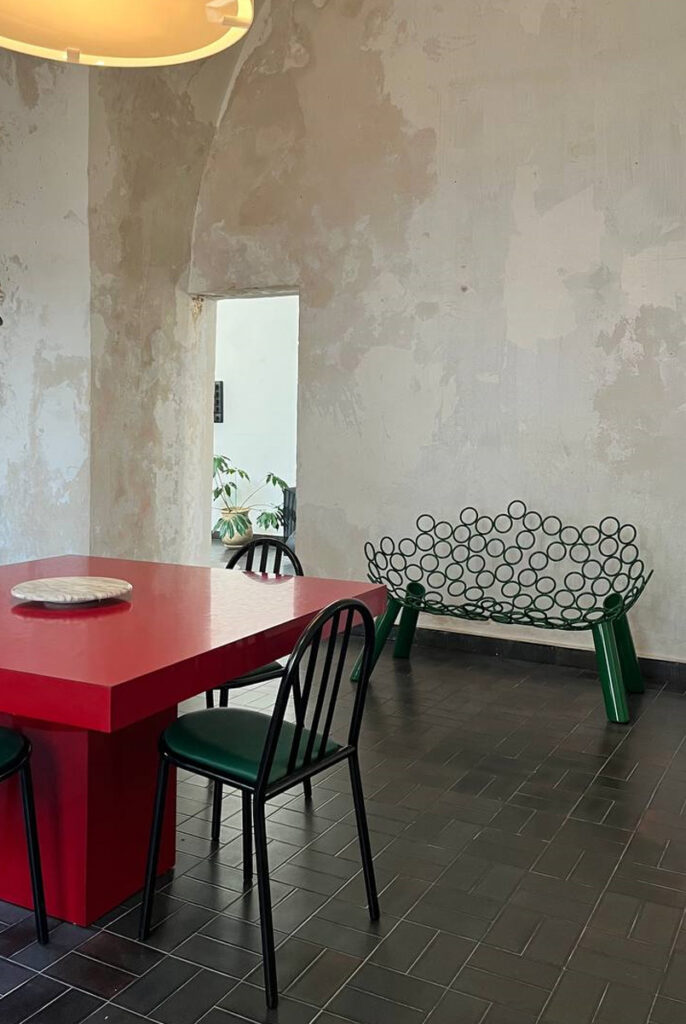
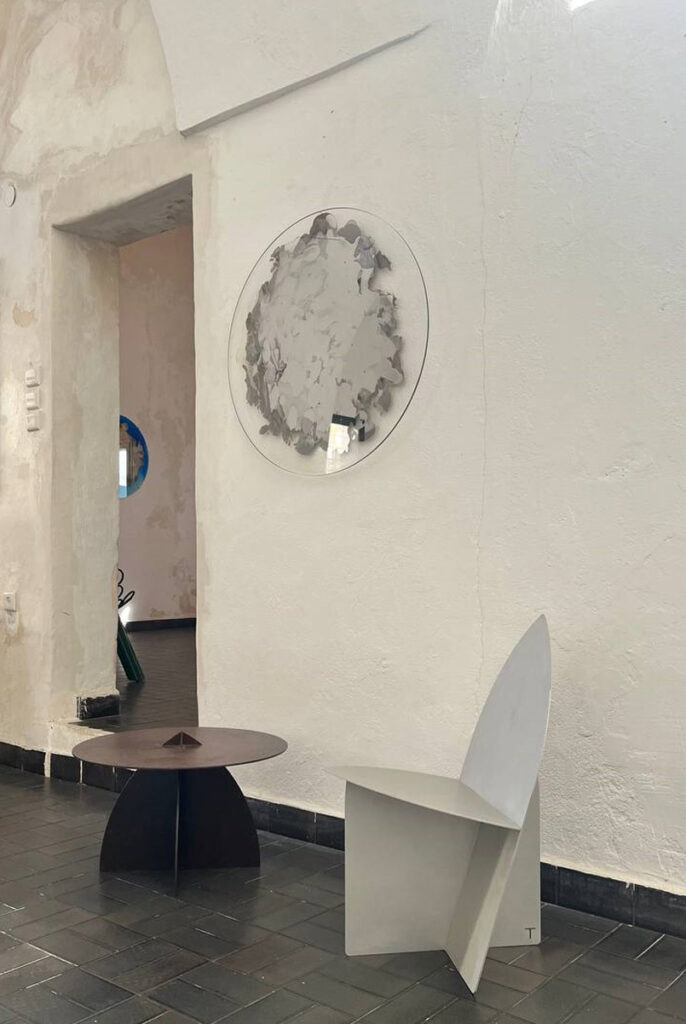
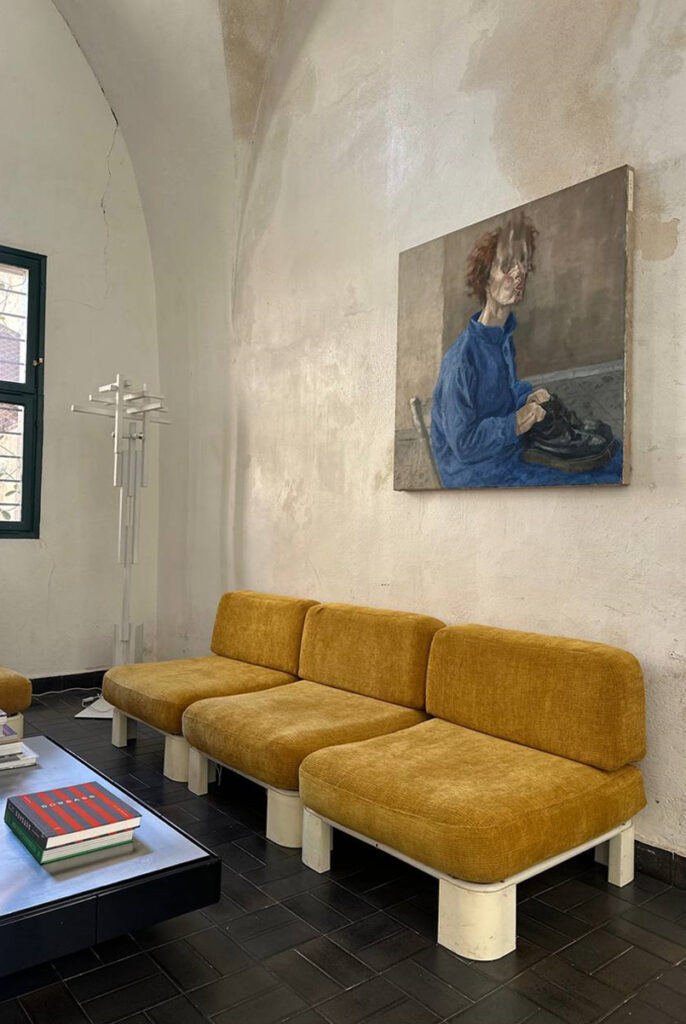
SALT gallery is also your home, a space where you live. What is it like living in a museum?
We opened SALT as both a gallery and our home, allowing us to live surrounded by the pieces we create and it is really improving our creation daily.
Through our own example, we demonstrate what it means to live with collectible design – to use these objects daily, and to fully enjoy their presence. Whether it’s sitting on a unique sofa, looking into an unusual mirror, or dining at a designer table, we embrace these creations as part of everyday life.
Visitors see that this lifestyle is not only possible but also inspiring, often motivating them to challenge us and create bespoke objects that are “Tailor-made” into their own homes.
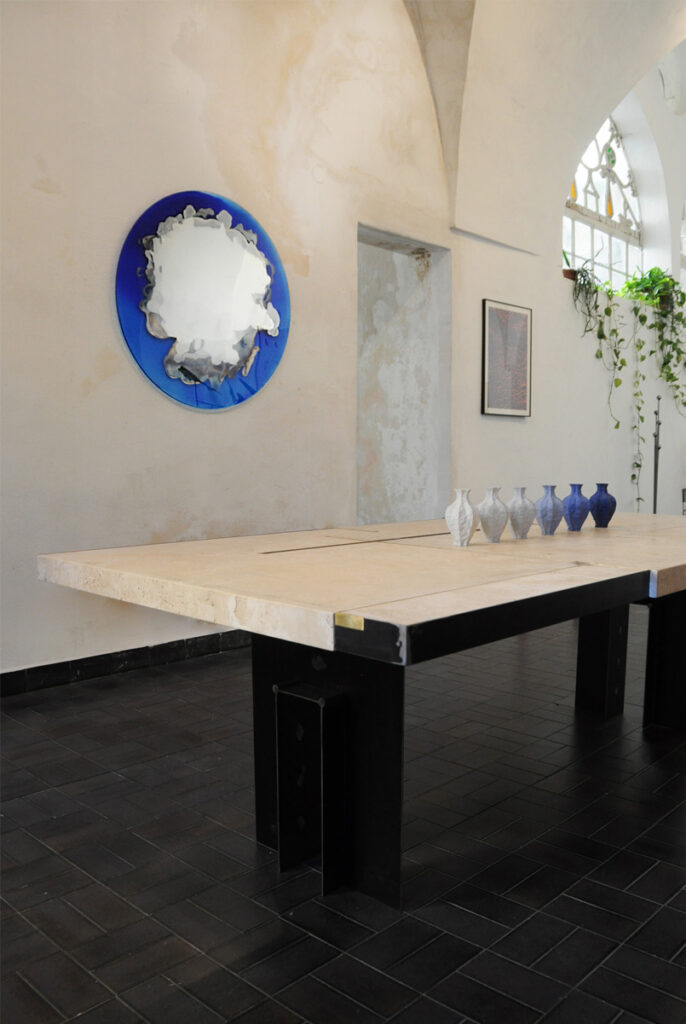
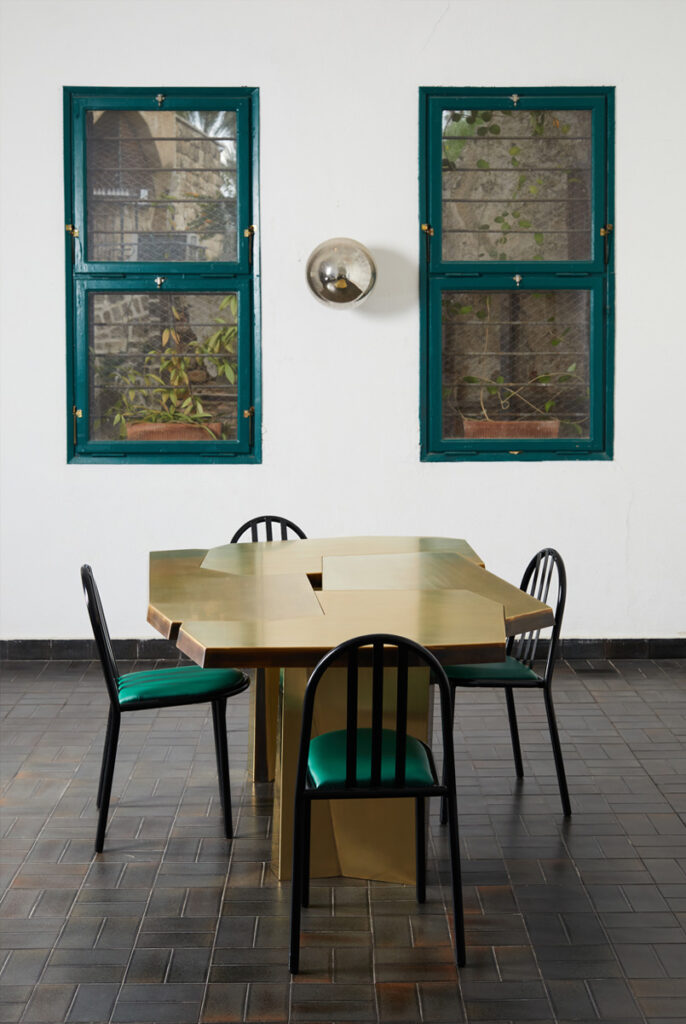
How did your participation in TAAD come about?
What happened with TAAD was kind of surreal. Tomer and I had often fantasized about a collectible design fair taking place in Tel Aviv.
When we heard about TAAD and the prestigious galleries set to participate – the very ones we constantly follow, it was hard to believe at first!
A common art consultant introduced us to Maria Nasimov, the founder of TAAD. After her visit to our gallery it was clear and natural that SALT will have local presence of objects in the fair.
How did you select your works for TAAD?
I chose three pieces from different series that showcase various approaches and ideas behind my practice, with diverse techniques and scales:
- Stains of Reflection #22 from the Stains of Reflection series,
- Sun from the Golden Series (inspired by divine light),
- Silver is Light from the Black Series (exploring the connection to photography).
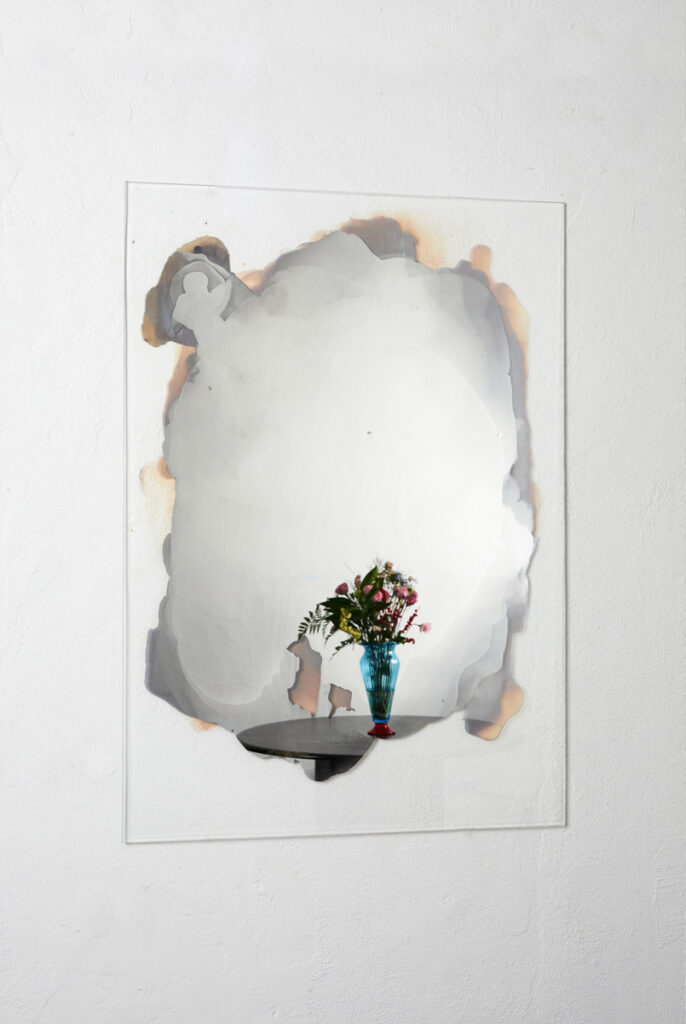
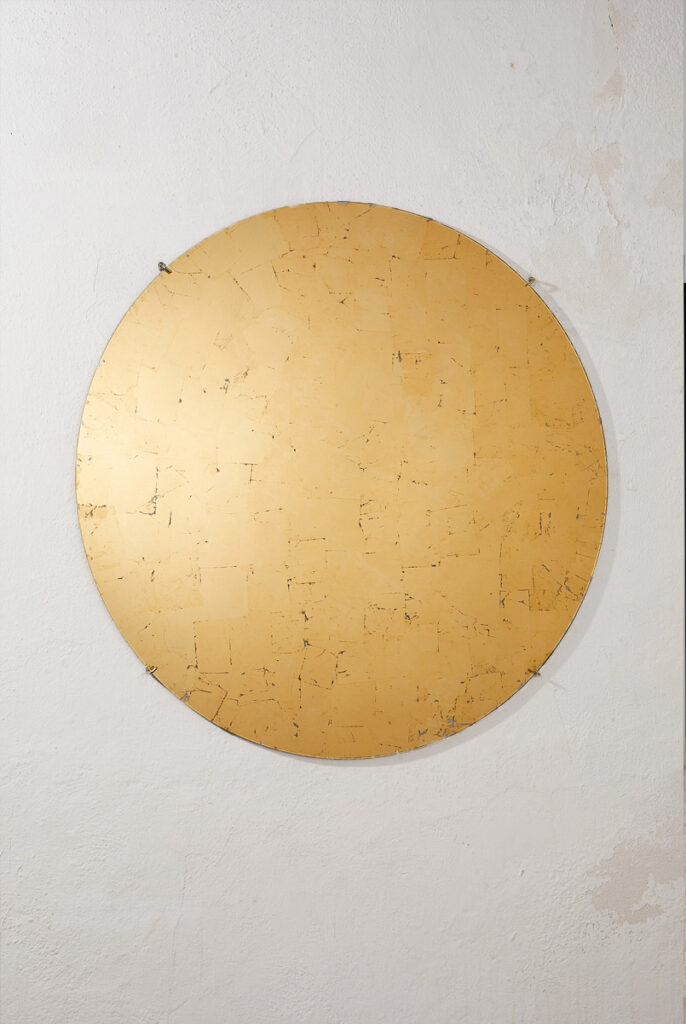
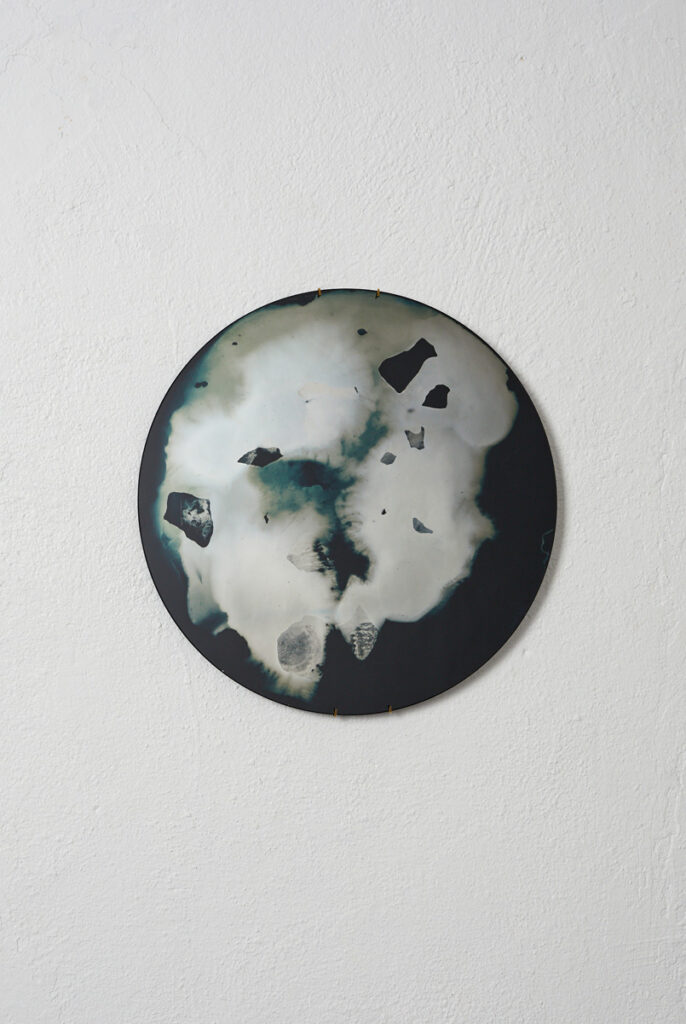
What is your vision for the future of collectible design in Israel?
I believe the field is still in its early stages here, but it’s beginning to grow, and I see its potential. Many people aren’t familiar with the concept yet, but they’re often deeply impressed when they encounter it.
When we exhibited at the Collectible fair in Brussels, we brought objects inspired by the local history of our region- Ottoman arches, Christian iconography, and artifacts from the British Mandate era. Jaffa’s layered history, sacred to three religions, imbues our work with a global resonance that people from all over the world can connect to.
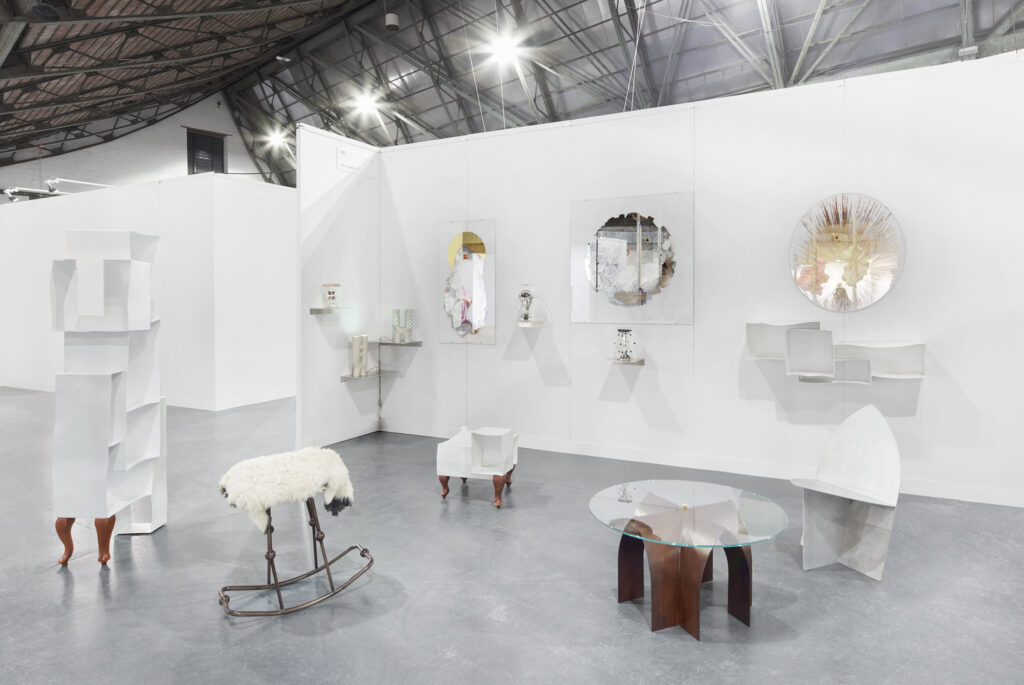
Interview by Nadia Kraginskii and Olga Goldina for DI CATALOGUE
Tomer Netanel Levy & Shay Alfia, SALT Gallery
Tel Aviv-Yafo, Israel
Art and Design Collectibles
